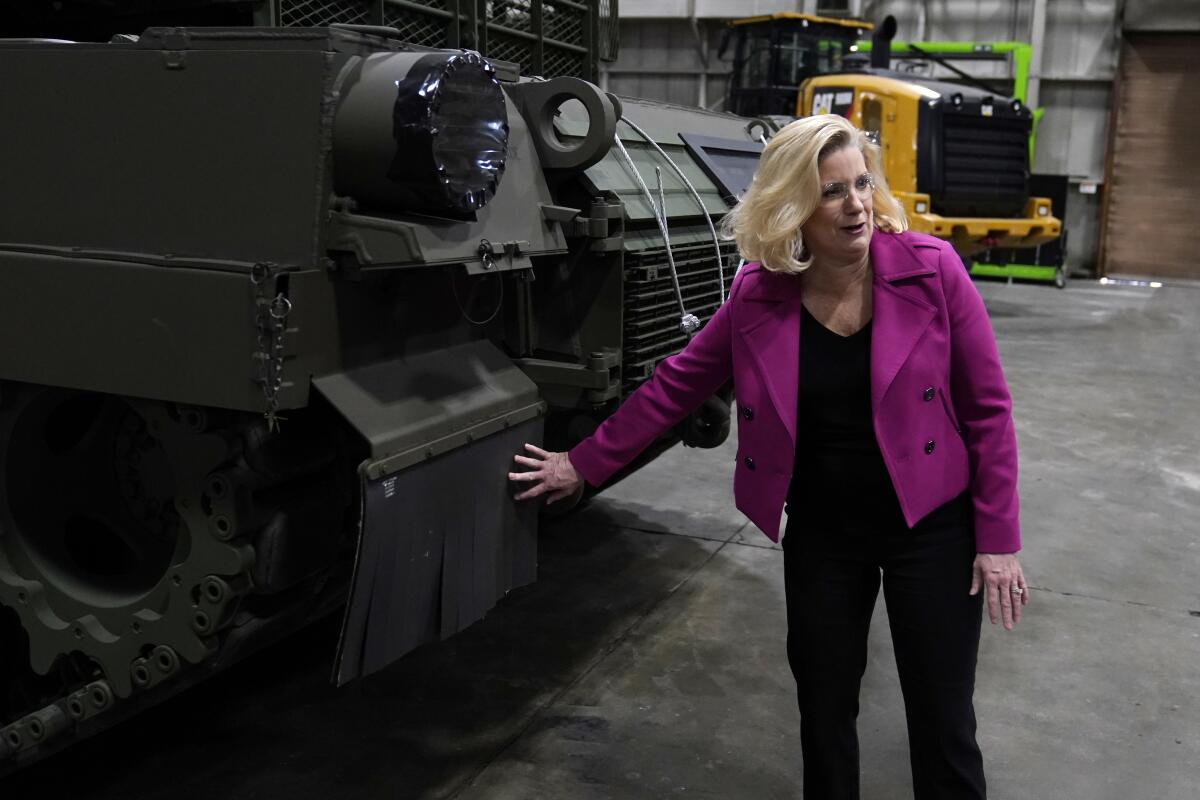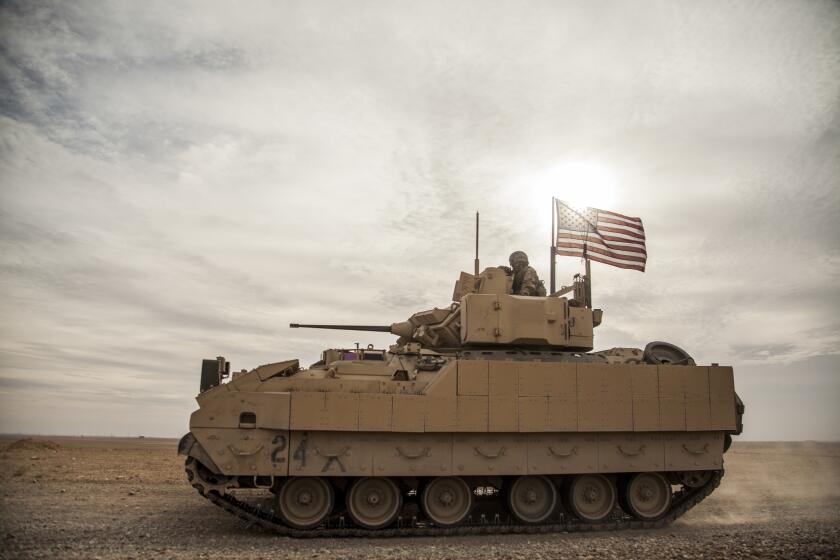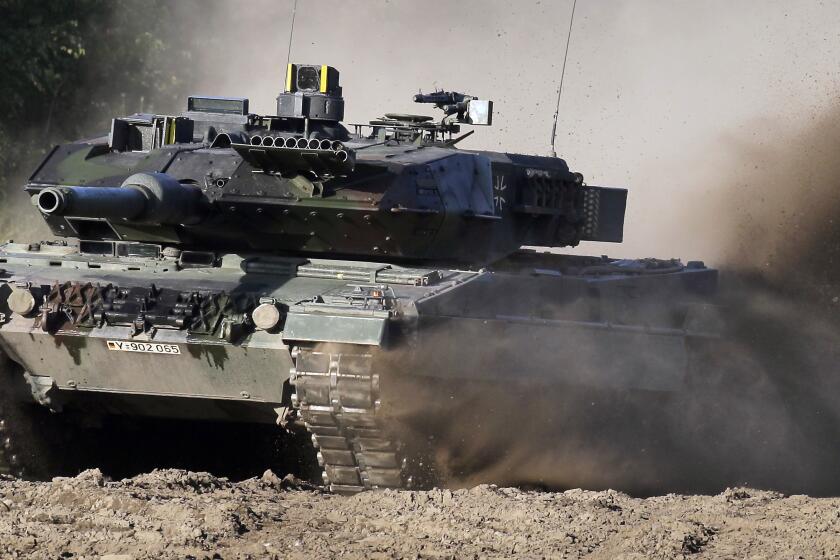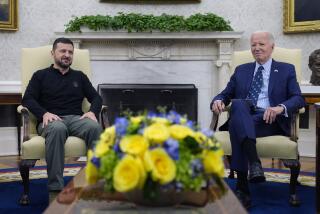A key part of U.S. help with Ukraine’s war effort is made in Ohio

LIMA, Ohio — Thousands of miles from the front lines, a sprawling manufacturing plant in this small Midwestern city is playing a crucial role in the effort to arm Ukraine as it fends off Russia’s nearly year-old invasion.
Owned by the U.S. Army and operated by General Dynamics, the plant is expected to refurbish Abrams tanks for Washington to send to Ukraine and is already preparing to build an updated version of the vehicle for Poland, officials said Thursday as they toured the facility.
Army Secretary Christine Wormuth, who walked through the plant with other Army leaders and senior officers, said it’s highly likely the plant will provide the tanks for Ukraine.
“We’re still looking at options for exactly what variant of tanks will be provided to the Ukrainians. I think there’s still a little bit to be worked out, but certainly, the tanks being built here in Lima are central,” she said.
An Associated Press reporter accompanied Wormuth on the tour, the first journalist to walk the production lines since the Biden administration pledged to send Abrams tanks to Kyiv.
U.S. officials have declined to provide details about the Abrams tanks that will eventually go to Ukraine, saying they have to decide whether to send refurbished older Army tanks, Marine tanks or some other version. But in most cases, the tanks would need upgrades at the Lima plant before being shipped to Ukraine’s battlefront.
Armored vehicles from the U.S. and Germany, including 50 tank-killing Bradleys, should expand Ukraine’s ability to move troops to the front lines.
“Part of it is figuring out ... what’s the best one that can allow us to get the Ukrainians tanks in as timely a fashion as we can” without disrupting foreign military sales, Wormuth said.
Officials said Thursday that production totals at the plant — formally called Joint Systems Manufacturing Center-Lima — vary, based on contract demands. And though the plant is building 15 to 20 armored vehicles per month, including tanks, it can easily boost that to 33 a month and could add another shift of workers to build more if needed.
Wormuth said the timeline on sending Abrams tanks to Ukraine depends on whether the U.S. takes tanks from existing military training stocks or from Army units, which would be less desirable because it could affect their combat readi- ness. And the development of tanks for Ukraine would also have to be squeezed in between the current contracts for foreign sales, which include 250 of the newest versions for Poland and about 75 for Australia.
The Biden administration announced in January that it would send 31 M1A2 Abrams tanks to Ukraine, after saying for months that the 70-ton battle powerhouses were too complicated to operate, maintain and repair. The decision was part of a broader political maneuver that opened the door for Germany to announce that it would send its Leopard 2 tanks to Ukraine and allow Poland and other allies to do the same.
Germany may soon approve deliveries of high-tech Leopard 2 tanks that Ukraine and others hope will boost Kyiv’s fight against Russian invaders.
Ukrainian leaders have pressed for the Abrams tanks, which first deployed in war in 1991 and have thick armor, a 120-millimeter main gun, armor-piercing capabilities and advanced targeting systems. They run on thick tracked wheels and have a 1,500-horsepower turbine engine with a top speed of about 42 mph.
As she walked the production lanes in the 25-acre building, Wormuth got to see the building-out process of the newest version of the Abrams, from empty steel hulls into shiny, newly painted tanks — a process that takes 18 to 24 months.
The U.S. doesn’t build new tanks from scratch. It has a fleet of about 2,500 Abrams tanks, and takes older tanks, tears them down and uses the empty hull as a starting point to build a new one. Some hulls have been refurbished multiple times.
Across the aisle from one empty hull, sparks flew as a worker welded pieces of the tank together. In another section, a worker showed where a new auxiliary engine would be installed in the latest version, which will run on diesel when needed to save on the large amount of jet engine fuel the tank consumes.
Breaking News
Get breaking news, investigations, analysis and more signature journalism from the Los Angeles Times in your inbox.
You may occasionally receive promotional content from the Los Angeles Times.
Farther down the lane, workers had laid out the two rows of tracks the Abrams runs on, preparing to install them on one of the tank bodies. The tracks stretch out more than 60 feet and weigh two tons on each side.
About 800 people work at the plant, which is spread across 369 acres in northwest Ohio. Its 1.6 million square feet of manufacturing space is the only place where the M1A2 Abrams is made. About 45% of the workers are focused on the tank, but the plant also churns out Stryker armored vehicles, tank support vehicles and other equipment.
As Wormuth wrapped up her visit with a look at some of the finished tanks in another building, a long line of the newest Abrams tanks sat outside on train tracks. As she was preparing to leave, the train cars began to move, taking the tanks to Ft. Hood, Texas, where they’ll get radios and other equipment before going to their final destination with an Army unit.
Speaking to reporters afterward, Wormuth said the Army would invest about $558 million in improvements at the plant over the next 15 years. Some of those include expanded use of robotics.
“I think as the war in Ukraine has shown everyone here, there’s a real need to level up our defense industrial base,” she said. “The plant here in Lima is part of that.”
More to Read
Sign up for Essential California
The most important California stories and recommendations in your inbox every morning.
You may occasionally receive promotional content from the Los Angeles Times.












